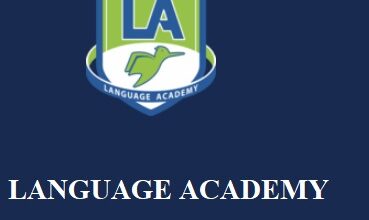
Social Studies Teaching Strategies
Social Studies Teaching Strategies
In today’s rapidly evolving world, social studies education plays a pivotal role in equipping students with the knowledge and skills they need to become informed and engaged citizens. By exploring diverse social, cultural, economic, and political aspects of human society, social studies fosters critical thinking, empathy, and a deeper understanding of the world. In this article, we will delve into the intricacies of social studies teaching strategies, exploring effective methods to engage students, promote critical analysis, and inspire a passion for learning.
Understanding Social Studies
Social studies is a comprehensive field of study that encompasses various disciplines, including history, geography, government, economics, and culture. It provides students with a multidimensional understanding of human interactions, past and present, and encourages them to explore the complexities and interconnections within societies. By investigating cultural diversity, the foundations of governance, historical events, economic principles, and spatial understanding, students develop a holistic perspective that prepares them for active participation in society.
The Role of Teaching Strategies in Social Studies
Teaching strategies are the guiding principles and techniques that educators employ to facilitate effective social studies instruction. They bridge the gap between curriculum objectives and student engagement, creating a dynamic and interactive learning environment. By employing research-based strategies, educators can foster an environment where students actively construct their knowledge, develop critical thinking skills, and engage in meaningful discussions.
Effective teaching strategies in social studies encourage active learning, enabling students to develop a deeper understanding of social, cultural, and historical phenomena. These strategies empower students to analyze primary and secondary sources, explore multiple perspectives, and cultivate empathy for diverse viewpoints. Through purposeful instruction, educators can nurture students’ capacity to think critically, evaluate evidence, and articulate informed opinions.
Essential Social Studies Teaching Strategies
- Concept Mapping and Graphic Organizers: Concept mapping is an effective strategy that helps students organize their understanding of complex social studies concepts. By creating visual representations of relationships between ideas, students can identify key connections and develop a comprehensive understanding of the subject matter. Graphic organizers, such as Venn diagrams, flowcharts, and mind maps, provide students with a structured framework to organize information and visualize the interplay of various concepts.
For example, when studying the causes and effects of the American Revolution, students can create a concept map that identifies key events, such as the Stamp Act, the Boston Tea Party, and the signing of the Declaration of Independence. They can then explore the interconnectedness of these events, analyze the motivations of key individuals, and understand the long-term consequences of the revolution.
- Role-playing and Simulations: Role-playing and simulations provide students with immersive experiences that bring historical events, political processes, and social issues to life. By assuming the roles of historical figures, community leaders, or participants in hypothetical scenarios, students engage in critical thinking, problem-solving, and decision-making. These experiential activities foster empathy, as students gain a deeper understanding of the complexities faced by individuals in different historical and cultural contexts.
For instance, students can simulate a constitutional convention to understand the challenges and compromises involved in drafting a constitution. By assuming the roles of delegates with different interests, students grapple with the conflicting perspectives that shaped the United States foundational document, promoting a nuanced understanding of the complexities of governance.
- Project-based Learning: Project-based learning provides students with an opportunity to investigate real-world issues and apply social studies concepts to authentic contexts. Through inquiry, research, collaboration, and presentation, students develop a deeper understanding of social studies content and cultivate essential 21st-century skills such as critical thinking, problem-solving, communication, and collaboration.
For example, students can engage in a project that explores sustainable development in their local community. They can examine historical factors that influenced the community’s growth, analyze the economic and environmental impacts of development, and propose solutions to promote sustainable practices. This project-based approach encourages students to think critically, consider multiple perspectives, and develop solutions that address the needs of the community.
- Collaborative Learning and Discussions: Collaborative learning involves students working together in small groups or as a whole class to actively engage with social studies content. Through discussions, debates, and cooperative tasks, students explore different viewpoints, negotiate meaning, and develop a deeper understanding of complex concepts.
For instance, educators can facilitate structured discussions where students analyze primary sources related to a historical event or a contemporary social issue. By encouraging students to respectfully share their perspectives, question assumptions, and support their arguments with evidence, educators foster critical thinking, communication skills, and an appreciation for diverse viewpoints.
- Field Trips and Real-world Connections: Field trips and real-world connections provide students with opportunities to experience social studies concepts firsthand. By visiting historical sites, museums, and government institutions, or engaging with community organizations, students connect classroom learning with real-world experiences. These immersive experiences deepen their understanding of social studies content and foster a sense of connection to the broader world.
For example, a visit to a local historical site allows students to walk in the footsteps of the past, observe artifacts, and interact with interpreters who bring history to life. By experiencing the physical spaces and objects associated with historical events, students gain a more profound appreciation for the context and significance of what they have learned in the classroom.
Differentiated Instruction in Social Studies
Every student is unique, with varying strengths, interests, and learning needs. Differentiated instruction is an approach that aims to accommodate these individual differences and ensure that all students can access and engage with social studies content effectively. By adapting content, process, and assessment, educators create an inclusive learning environment that supports the diverse needs of students.
- Adapting Content: Differentiating content involves tailoring instructional materials to match students’ readiness levels, interests, and learning profiles. Educators can provide a range of resources, such as leveled texts, multimedia materials, and differentiated readings, to meet individual students’ needs. Adapting content ensures that students are appropriately challenged, yet still able to grasp and apply key concepts.
For example, when teaching about ancient civilizations, educators can offer a variety of texts and resources at different reading levels. Students who need additional support can access simplified texts or graphic novels that provide essential information while maintaining engagement. On the other hand, students who demonstrate advanced proficiency can delve into more complex texts or pursue independent research projects.
- Adapting Process: Differentiating the process involves providing multiple pathways for students to acquire knowledge and demonstrate understanding. Educators can offer various learning activities, assignments, and instructional strategies to accommodate different learning styles and preferences. By incorporating a mix of independent work, small group activities, hands-on tasks, and technology-based resources, educators engage students in diverse ways.
For instance, when exploring a historical event, educators can offer a range of activities that cater to different learning preferences. Some students may prefer to conduct independent research using online resources, while others may thrive in collaborative group discussions or hands-on projects. By offering choice and flexibility, educators honor students’ diverse strengths and empower them to take ownership of their learning.
- Adapting Assessment: Differentiating assessment involves utilizing varied measures to evaluate student learning. Traditional assessments, such as quizzes or tests, may not capture the full range of students’ understanding and abilities. By incorporating authentic assessments, such as projects, presentations, debates, or performance-based tasks, educators can gather a more comprehensive and holistic picture of student achievement.
For example, instead of a traditional test on the causes of the Civil War, students can engage in a debate where they assume the roles of historical figures and defend their perspectives on key issues. This approach not only assesses students’ knowledge but also their ability to analyze complex historical events and articulate arguments based on evidence. Additionally, educators can incorporate self-assessment and reflection opportunities, allowing students to monitor their progress and set goals for improvement.
Incorporating Current Events in Social Studies
Social studies is not confined to the study of the past; it also encompasses the present and prepares students for active civic participation. By incorporating current events into social studies instruction, educators help students understand the relevance of the subject matter to their lives and develop the skills needed to navigate contemporary issues.
- Connecting Social Studies to the Present: Educators can bridge the gap between historical events and current issues by explicitly connecting social studies concepts to the present. By highlighting the relevance and implications of historical events, students develop a deeper understanding of the continuities and changes that shape society.
For example, when studying the Civil Rights Movement, educators can facilitate discussions on the ongoing struggles for racial justice and equality. By exploring contemporary movements such as Black Lives Matter or examining current challenges related to voting rights, educators help students see the connections between the past and present and understand the importance of historical context in addressing present-day issues.
- Discussing Controversial Issues: Social studies classrooms provide an ideal setting for students to engage in respectful and informed discussions about controversial issues. By creating a safe and inclusive environment where diverse perspectives are valued, educators can facilitate meaningful dialogue that promotes critical thinking, empathy, and understanding.
For instance, when exploring debates surrounding immigration policies, educators can guide students in examining various viewpoints, analyzing evidence, and considering the historical and social contexts that shape public opinion. Through structured discussions, students learn to listen attentively, articulate their perspectives, and engage in constructive dialogue with their peers.
- Analyzing News Sources and Media Literacy: In today’s digital age, media literacy skills are essential for students to critically analyze information and navigate the complex media landscape. Social studies classrooms provide an ideal space to develop these skills by incorporating lessons on media literacy and analyzing news sources.
Educators can guide students in evaluating the credibility and bias of different sources, examining the use of evidence and logical reasoning, and recognizing the influence of media on public opinion. By engaging in activities that promote media literacy, students develop the skills needed to be discerning consumers and producers of information in the digital era.
- Encouraging Civic Engagement: Social studies education aims to cultivate active and responsible citizenship. Educators can empower students to become engaged citizens by encouraging them to take action on social issues that they care about.
For example, educators can facilitate service-learning projects where students identify community needs, develop action plans, and contribute to positive change. By connecting classroom learning to real-world applications, students recognize the power of their voices and actions in shaping their communities.
Read Also:
How to Set Up Math Team in Middle School
Assessing Student Learning in Social Studies
Assessment is a vital component of effective social studies teaching. It provides feedback on student learning, informs instructional decisions, and ensures that students meet the desired learning outcomes. By employing a variety of assessment strategies, educators can gather evidence of student understanding and growth.
- Formative and Summative Assessments: Formative assessments are ongoing assessments conducted throughout the learning process to monitor student understanding and guide instructional decisions. These can include quizzes, discussions, observations, and exit tickets. Formative assessments provide valuable feedback to both educators and students, allowing for timely interventions and adjustments.
Summative assessments, on the other hand, are conducted at the end of a unit or course to evaluate student achievement. These assessments can take the form of traditional tests, projects, presentations, or essays. Summative assessments provide a comprehensive picture of student’s knowledge and skills and can serve as benchmarks for accountability.
- Authentic Assessments in Social Studies: Authentic assessments mirror real-world applications of social studies concepts and skills. These assessments go beyond traditional tests and ask students to apply their knowledge in meaningful and relevant contexts.
For example, instead of a simple multiple-choice test on a historical event, students may be asked to create a historical documentary, write a persuasive letter to a government official, or develop a community action plan. Authentic assessments allow students to demonstrate their understanding in ways that reflect the complexities of the subject matter and promote the transfer of knowledge and skills to real-world situations.
- Rubrics and Criteria for Evaluating Student Work: To ensure consistent and fair evaluation of student work, educators can develop clear rubrics and criteria that outline expectations and standards. Rubrics provide students with guidance on what is expected and allow educators to provide specific feedback on strengths and areas for improvement.
By using rubrics, educators can assess student work holistically, considering not only the content knowledge but also the quality of critical thinking, communication skills, and the ability to analyze sources and construct evidence-based arguments. Clear criteria and rubrics enhance transparency, promote student engagement, and foster a shared understanding of expectations.
Integrating Social Studies Across the Curriculum
Social studies education does not exist in isolation but can be integrated across various disciplines, creating interdisciplinary connections that deepen students’ understanding of concepts and foster their ability to make connections across subject areas.
- Interdisciplinary Connections: Integrating social studies with other disciplines provides opportunities for students to see the interconnectedness of knowledge and develop a more comprehensive understanding of the world. By collaborating with colleagues from other subject areas, educators can design interdisciplinary units or projects that explore shared themes, concepts, or issues.
For example, when studying ancient civilizations, educators can collaborate with language arts teachers to incorporate historical fiction or with art teachers to explore the aesthetics and symbolism of ancient artifacts. These interdisciplinary connections promote a holistic understanding of social studies and allow students to make meaningful connections between different areas of knowledge.
- Literacy Integration in Social Studies: Literacy skills are crucial for students to access and engage with social studies content effectively. By integrating reading, writing, and oral communication activities into social studies instruction, educators enhance students’ comprehension, analysis, and communication skills.
For instance, students can read primary and secondary sources, analyze historical texts, and write argumentative essays or research papers to communicate their understanding. Additionally, educators can facilitate discussions and debates that allow students to develop their oral communication and critical listening skills.
- STEM and STEAM Connections: Social studies education can also intersect with STEM (Science, Technology, Engineering, and Mathematics) or STEAM (Science, Technology, Engineering, Arts, and Mathematics) fields. By exploring the connections between social studies and these disciplines, educators promote interdisciplinary thinking and problem-solving skills.
For example, when studying ancient civilizations, educators can incorporate archaeological methods and scientific inquiry to investigate artifacts or use digital technologies to reconstruct historical sites. By integrating STEM or STEAM approaches, students gain a deeper understanding of social studies concepts while developing skills in data analysis, critical thinking, and innovation.
Strategies for Culturally Responsive Social Studies Teaching
Culturally responsive teaching recognizes and values the diversity of students’ backgrounds, experiences, and perspectives. In social studies, it is essential to incorporate multiple perspectives, challenge biases, and promote inclusive practices to create a culturally responsive learning environment.
- Valuing and Respecting Diverse Cultures: Educators can infuse social studies instruction with respect for diverse cultures, histories, and perspectives. By actively seeking out and incorporating resources, texts, and materials that represent diverse voices and experiences, educators validate students’ cultural identities and foster a sense of belonging.
For instance, educators can include literature, primary sources, and historical accounts that reflect the contributions and experiences of marginalized communities, indigenous peoples, or underrepresented groups. By highlighting these diverse perspectives, educators promote a more comprehensive understanding of history and society.
- Including Multiple Perspectives: Social studies education offers an opportunity to explore multiple perspectives on historical events, societal issues, and cultural practices. By encouraging students to examine different viewpoints and engage in respectful dialogue, educators promote critical thinking, empathy, and a broader understanding of the complexities of social studies topics.
Educators can facilitate activities that involve analyzing primary and secondary sources from various perspectives, engaging in debates or discussions that encourage students to consider different viewpoints, and examining how different cultural, social, and historical contexts shape perspectives. By providing students with opportunities to encounter and critically analyze diverse perspectives, educators foster an appreciation for cultural diversity and promote a more inclusive understanding of social studies.
- Incorporating Inclusive Resources and Materials: Educators should strive to incorporate inclusive resources and materials that reflect the diversity of the student population and promote cultural understanding. This can include diverse literature, multimedia resources, artwork, and primary sources that represent a range of cultural backgrounds, historical experiences, and social perspectives.
For instance, when teaching about the Civil Rights Movement, educators can include diverse narratives and first-person accounts that highlight the experiences of individuals from different racial and ethnic backgrounds. By using inclusive resources, educators challenge stereotypes, broaden students’ perspectives, and promote empathy and understanding.
Incorporating culturally responsive teaching practices in social studies helps students develop a sense of cultural competency, respect for diversity, and a deeper understanding of the interconnectedness of societies.
Professional Development and Resources for Social Studies Teachers
To continuously enhance their teaching practices and stay informed about the latest developments in social studies education, educators can engage in professional development opportunities and access a wealth of resources.
- Continuing Education Opportunities: Educators can participate in workshops, conferences, seminars, and webinars focused on social studies teaching strategies, curriculum development, and innovative instructional methods. These professional development opportunities provide educators with new insights, research-based strategies, and opportunities to collaborate with colleagues.
- Professional Organizations and Networks: Joining professional organizations such as the National Council for Social Studies (NCSS) or state-level social studies associations can provide educators with access to valuable resources, support networks, and opportunities for professional growth. These organizations offer conferences, publications, online communities, and networking opportunities that connect educators with like-minded professionals and help them stay abreast of the latest trends and research in social studies education.
- Online Resources and Educational Websites: The internet offers a wealth of resources that can support social studies instruction. Educational websites, such as the Smithsonian Learning Lab, National Geographic Education, or the Library of Congress, provide lesson plans, primary source materials, interactive activities, and multimedia resources that engage students and enrich social studies instruction. Online communities and social media platforms dedicated to social studies education also offer a space for educators to share ideas, collaborate, and access a wide range of resources.
- Social Studies Teaching Books and Publications: There are numerous books and publications dedicated to social studies teaching that provide in-depth insights, research-based strategies, and practical tips. Educators can explore titles such as “The Social Studies Teacher’s Toolbox” by Elizabeth Hinde, “Teaching Social Studies Today” by Peter H. Martorella, or publications from academic journals like the “Social Education” journal published by the NCSS.
Conclusion
Effective social studies teaching strategies empower students to become informed, critical thinkers, and engaged citizens. By employing research-based strategies such as concept mapping, role-playing, project-based learning, and collaborative discussions, educators create dynamic and meaningful learning experiences. Differentiating instruction, incorporating current events, and assessing student learning authentically ensure inclusivity and relevance. Integrating social studies across the curriculum and embracing culturally responsive teaching practices deepen students’ understanding of the interconnectedness of our world.






